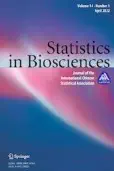Is 14-days a sensible quarantine length for COVID-19? Examinations of some associated issues with a case study of COVID-19 incubation times

Abstract
To confine the spread of an infectious disease, setting a sensible quarantine time is crucial. To this end, it is imperative to well understand the distribution of incubation times of the disease. Regarding the ongoing COVID-19 pandemic, 14-days is commonly taken as a quarantine time to curb the virus spread in balancing the impacts of COVID-19 on diverse aspects of the society, including public health, economy, and humanity perspectives, etc. However, setting a sensible quarantine time is not trivial and it depends on various underlying factors. In this article, we take an angle of examining the distribution of the COVID-19 incubation time using likelihood-based methods. Our study is carried out on a dataset of 178 COVID-19 cases dated from January 20, 2020 to February 29, 2020, with the information of exposure periods and dates of symptom onset collected. To gain a good understanding of possible scenarios, we employ different models to describe incubation times of COVID-19. Our findings suggest that statistically, the 14-day quarantine time may not be long enough to control the probability of an early release of infected individuals to be small. While the size of the study data is not large enough to offer us a definitely acceptable quarantine time, and further in practice, the decision-makers may take account of other factors related to social and economic concerns to set up a practically acceptable quarantine time, our study demonstrates useful methods to determine a reasonable quarantine time from a statistical standpoint. Further, it reveals some associated complexity for fully understanding the COVID-19 incubation time distribution.